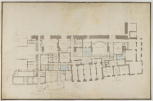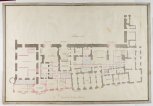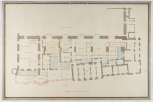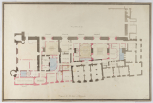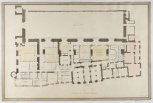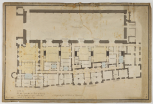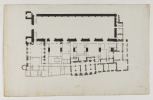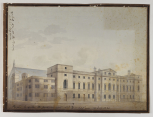Drawing
London: Palace of Westminster: The New Law Courts, surveys and designs, 1820-32 (507)
[149] Finished drawing, with preliminary revisions, New Law Courts, 27 December 1821
27th: Dec[embe]r 1821.
(subsequently written over to read 28 December 1821.)
Sir John Soane RA (1753 - 1837), architect
This drawing is annotated in Soane's hand.
Probably George Bailey (1792 - 1860), draughtsman
The Day Book entry for 27 December 1821 notes that George Bailey was About Plans of the Courts / at Westminster.
Possibly Charles Edward Papendiek (1801 - 1835), draughtsman
The Day Book entry for 27 December 1821 notes that Charles Papendiek was About drawings for / the Courts at Westminster.
SM 53/1/14



